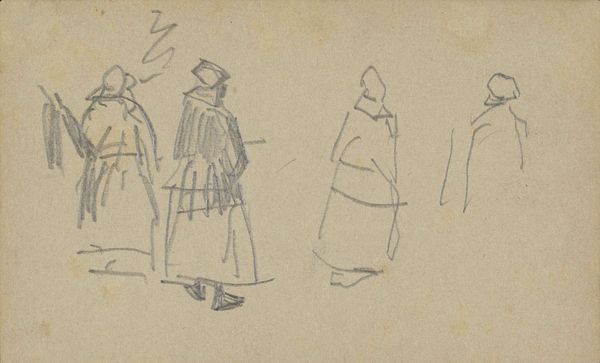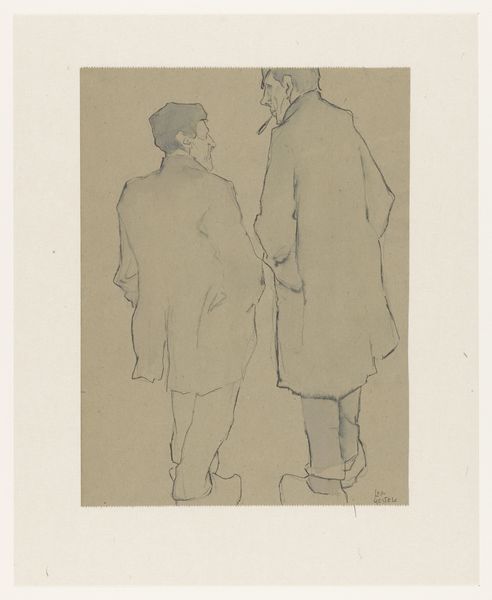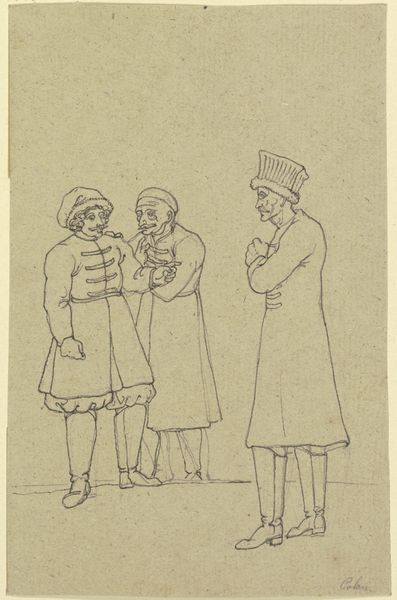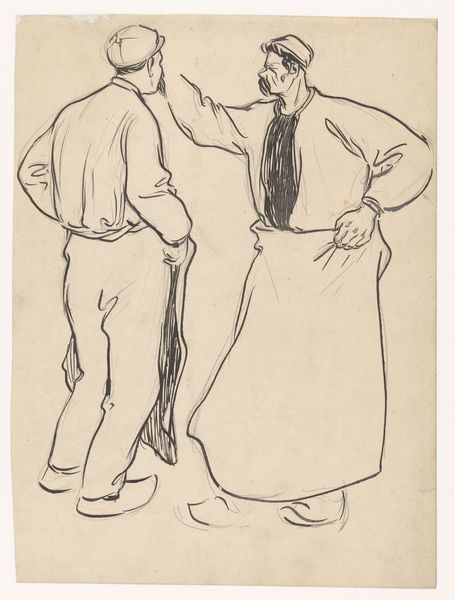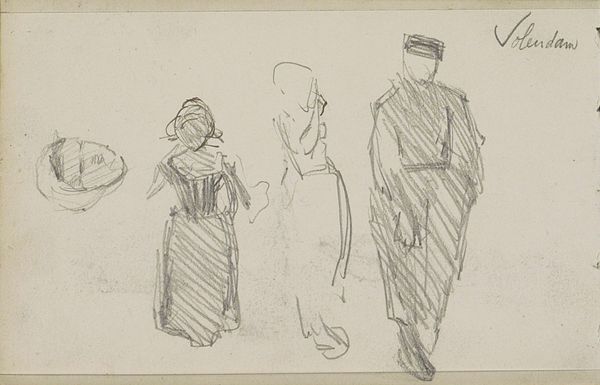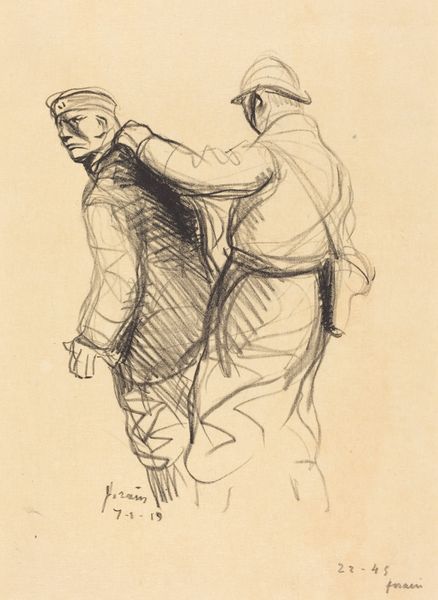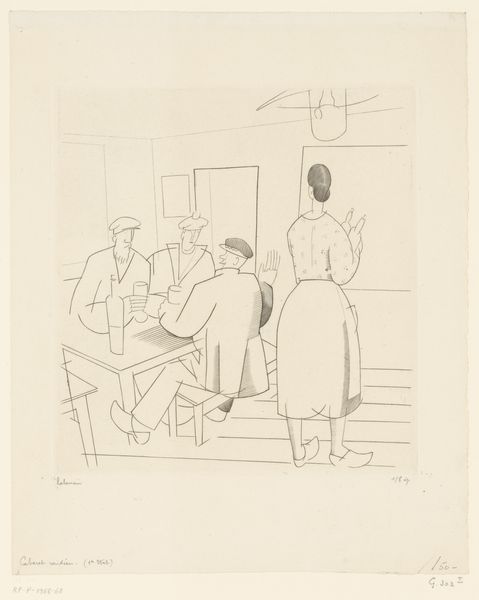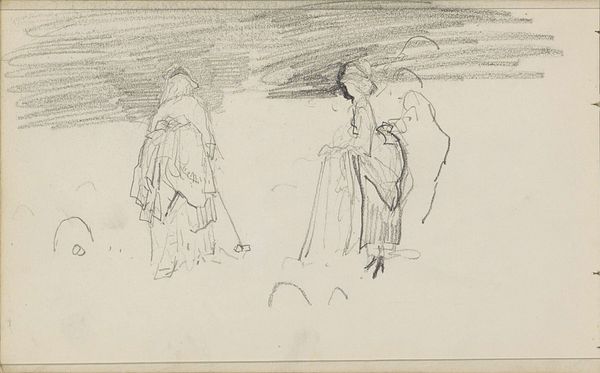
Dimensions: height 221 mm, width 269 mm
Copyright: Rijks Museum: Open Domain
Curator: Welcome! Today we’re looking at "Schetsen van een boerenjongen"– Sketches of a farm boy–a pencil and charcoal drawing by Jan de Waardt, made sometime between the 1890s and early 1900s, and now held here at the Rijksmuseum. Editor: It has an intimate feel, doesn’t it? Almost like catching a glimpse into the artist’s personal sketchbook. There's a certain unpretentious quality to the lines that makes the subject very compelling despite its humble, everyday theme. Curator: Absolutely. De Waardt was known for his genre paintings, depictions of everyday life, and I think this drawing gives us some insight into how he might have developed characters for his larger works. It shows the same figure in three different poses. The drawing is rooted in capturing slices of Dutch life from the era. How were peasants viewed during this time? It can open interesting debates on rural communities, class, and representation, doesn't it? Editor: Indeed. The very act of sketching such figures raises questions of agency. Was this intended as documentation, or perhaps an attempt at celebrating a certain mode of existence removed from the industrializing urban experience? The positioning of the figure also raises issues of gender performativity within this rural setting, because, in a way, it challenges masculine stereotypes through the gentle curves. Curator: His material circumstances also informed De Waardt's artistic choices. Access to expensive paints or large canvases was simply not available to most, rendering sketches like this invaluable records of observation and experimentation. I’d also point out that his sketches demonstrate a democratization of portraiture. It’s not a wealthy patron we see memorialized here. Editor: I see that. The loose strokes certainly suggest it. I wonder, who might this person have been in relation to de Waardt? A neighbor? Perhaps he offered help in some form to Jan. His image then carries meaning because he represents that intersection between poverty, dignity and rural industry. It could be said that the peasant embodies the values of thrift, toil and rootedness as viewed by urban artists, so there is an agenda within this image that cannot be forgotten! Curator: It’s precisely by looking at such seemingly simple images, by questioning the intent and investigating the context that we get a broader understanding of art history. Editor: Indeed. "Sketches of a Farm Boy," though seemingly a minor work, holds within its lines some major socio-cultural reflections relevant to the era and beyond.
Comments
No comments
Be the first to comment and join the conversation on the ultimate creative platform.


